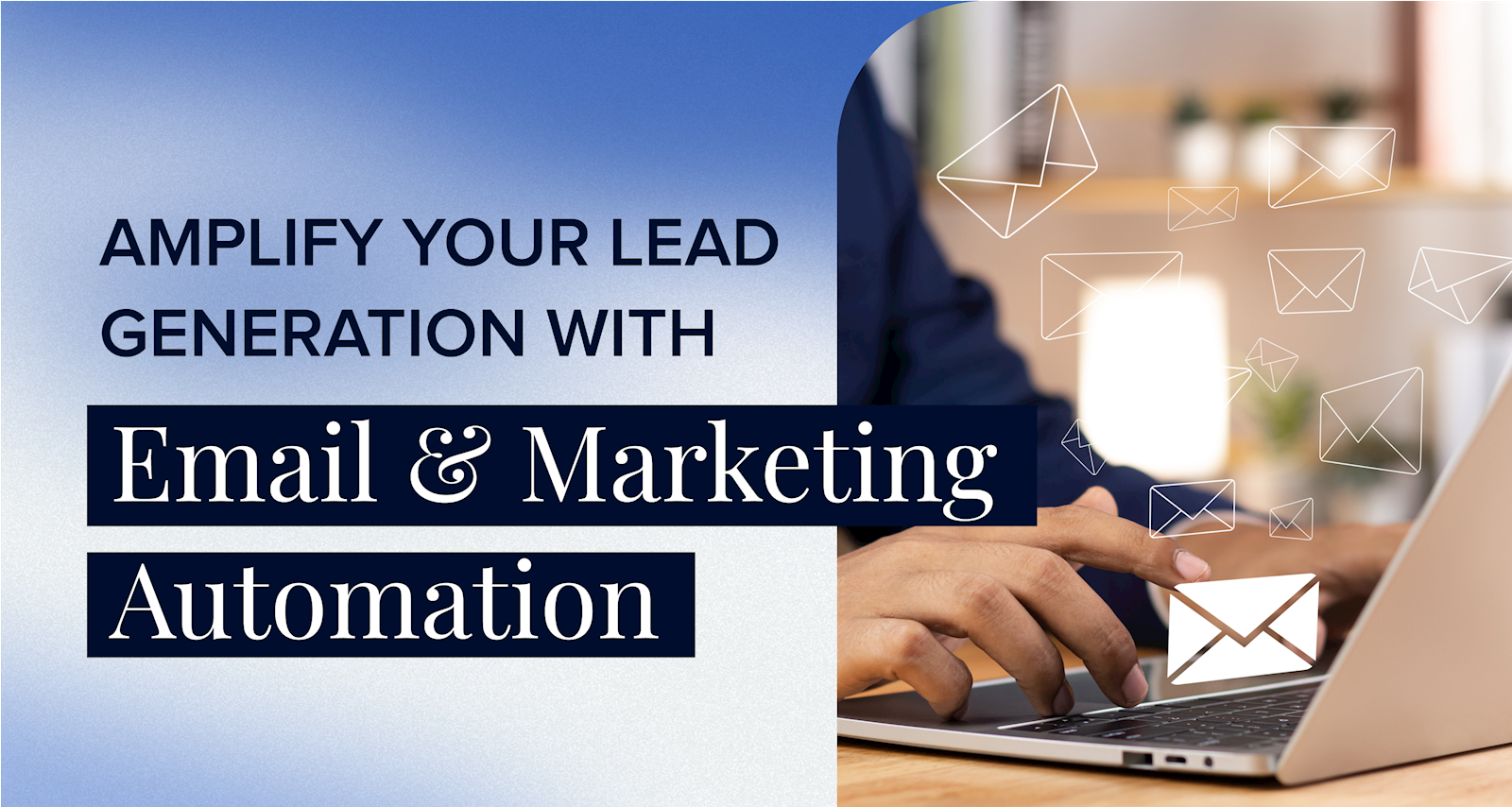9 Email & Marketing Automation Strategies for Generating More (& Better) Leads
Published by Spinutech on August 5, 2024

What’s worse: Not generating enough leads or generating leads that go nowhere?
How about we avoid both by leveraging email and marketing automation?
Imagine having a digital marketing tool that not only attracts the right prospects but also nurtures them into ready-to-buy customers — all while you focus on the bigger picture. If it sounds like a dream, I can assure you that you’re awake.
Learn how you can turn that dream into your reality and amplify the effectiveness of your lead generation efforts through email and marketing automation strategies.
Generating Leads Through Email & Marketing Automation
Email and marketing automation are powerful tactics for lead generation due to their ability to deliver personalized and targeted content directly to prospects' inboxes at scale. These methods offer exceptional cost-effectiveness and ROI, while enabling businesses to efficiently attract, nurture, and convert prospects at scale.
Here are nine ways to enhance your lead generation efforts:
1. Personalized Email Campaigns
How do you stand out in a crowded inbox? Get personal.
By segmenting your email list and tailoring content to match your audience's interests, behaviors, and preferences, you can craft campaigns that drive meaningful engagement.
No one wants to open an email that feels like it was written for everyone. They want to receive an email that feels like it was written just for them. That’s the power of personalization. Use the recipient’s name, refer to their industry or role, and bring up past interactions to create a connection that is going to keep them engaged with your brand.
2. Lead Magnets and Opt-In Forms
Lead magnets collect contact information like metal to — you guessed it — a magnet.
Whether it's an ebook, a whitepaper, a webinar, or even a free trial, offering something valuable in exchange for an email address can fill your pipeline with qualified leads. But you need to be intentional about your opt-in forms. Place them strategically on your website, and keep them as simple as possible — less is more when it comes to getting those clicks.
3. Automated Drip Campaigns
You want to flood your pipeline with qualified leads? Try a drip campaign.
We call them drip campaigns because they slowly build a consistent presence in the inbox of a prospect or customer, one pre-written email at a time.
By delivering a series of automated emails, you can guide prospects through the sales funnel with ease. The secret? Segmentation. Tailor your content based on your leads' interests and behaviors, and gradually introduce your product or service as the perfect solution to their needs. Don’t forget to include clear calls-to-action (CTAs) that nudge them closer to conversion.
4. Chatbots
Chatbots are your friend. More importantly, they're an always-available point of contact for potential customers, making them a powerful tool for lead generation.
When implemented on your website or even a social media platform, a chatbot can engage visitors 24/7, initiating conversations and guiding them through the sales funnel. It can ask targeted questions to gather relevant information, effectively qualifying leads and collecting valuable data like names, email addresses, and specific needs or preferences.
Chatbots can personalize interactions based on user behavior and past engagements, enhancing the overall user experience and increasing the likelihood of lead conversion.
5. SMS Marketing
With SMS marketing, your target audience is only a text away.
With an impressive open rate around 98% and a response rate averaging 45%, SMS provides a direct and personal communication channel. It also enables two-way communication, allowing you to nurture relationships by responding to inquiries and providing personalized experiences, which can enhance customer loyalty and drive conversions.
6. Lead Scoring and Qualification
Not all leads are created equal. Lead scoring is how you tell them apart.
Assign scores based on engagement and behaviors, allowing you to prioritize the leads most likely to convert. Now your sales team knows exactly who to focus on, while your marketing team can tailor nurturing content to match each lead’s score. And when a lead hits a certain threshold, trigger automated actions that push them further down the funnel.
7. A/B Testing and Optimization
The optimization work of a marketing automation strategist is never done.
A/B testing enables you to continuously refine your email campaigns to improve performance. Experiment with subject lines, email copy, layout, CTAs, and even send times to see what resonates best with your target audience.
8. Integration with CRM
When your email marketing and automation tools are integrated with your CRM, magic happens.
You get a centralized view of all your lead data, enabling seamless workflows and providing your sales team with valuable insights into marketing interactions. This integration ensures that no lead falls through the cracks, and that your entire team is aligned in driving conversions.
9. Integration with Multi-Channel Digital Marketing Campaigns
Integrating your email and marketing automation strategies with other channels (e.g. paid media, social media marketing, etc.) as part of lead generation efforts provides a cohesive approach to customer engagement and conversion. This omnichannel integration allows you to create a seamless customer experience across multiple touchpoints and deliver a unified marketing narrative that resonates more effectively with potential leads.
This integrated approach also enables you to leverage data from various sources to gain deeper insights into customer behavior and preferences.
Automate Your Lead Generation Efforts
By embracing these strategies, you’re not just generating leads — you’re creating a finely-tuned (and automated) process for turning prospects into loyal customers.
If your leads pipeline is starting to run dry, we can do something about that.